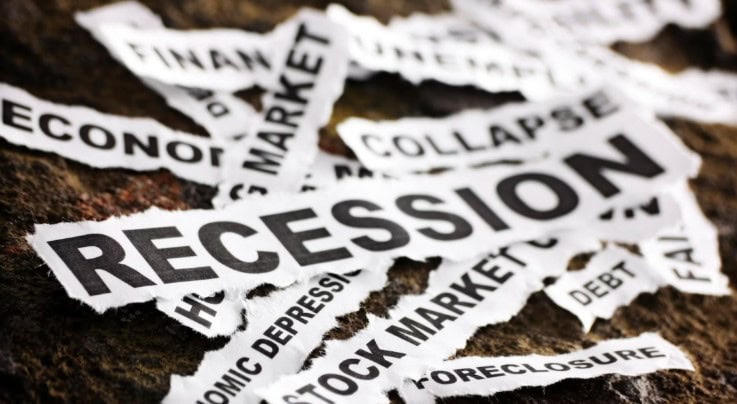Public debt-to-GDP ratios have climbed to historic highs in most advanced economies. This column studies the connection between productivity growth, fiscal policy, and public debt. Using a theoretical model, it argues that a feedback loop is possible between fiscal policy and growth. Large primary surpluses are associated with fiscal distortions which depress investment and productivity growth, and lead to further pressure on public debt-to-GDP ratios. A fall into fiscal stagnation can result from hysteresis effects or pessimistic animal spirits. Meanwhile, exiting fiscal stagnation requires large policy interventions that reduce the public debt-to-GDP ratio, such as credible pro-growth strategies.
Public debt-to-GDP ratios have climbed to record highs in most advanced countries, triggering a heated debate about their sustainability and macroeconomic implications (Blanchard et al. 2021, Auerbach and Yagan 2025). This debate is often based on the premise that productivity growth is exogenous to fiscal policy. Recent empirical evidence, however, suggests that firms’ investment and productivity growth do react to fiscal interventions. For instance, increases in corporate taxes and cuts in spending on public R&D seem to depress business investment and productivity growth (Croce et al. 2019, Antolin-Diaz and Surico 2022, Cloyne et al. 2022, Fieldhouse and Mertens 2023).
In some historical episodes, moreover, the correlation between fiscal policy and productivity growth is visible to the naked eye. Take the case of Italy, illustrated in Figure 1. The Italian public debt-to-GDP ratio rose substantially during the 1980s, due to high public expenditure. Since then, Italian governments had to come up with large primary surpluses – financed with a combination of high taxes and low public investment – to sustain the public debt. Interestingly, high primary surpluses have been accompanied by a sharp slowdown in productivity growth (Hassan and Ottaviano 2013). The fact that in many advanced economies public debt-to-GDP ratios are reaching Italian levels makes one wonder whether similar dynamics will soon happen elsewhere.
Figure 1 The evolution of public debt, primary surpluses, and productivity growth


Notes: This figure contrasts the evolution of public debt, primary surpluses, and productivity growth in Italy, against a sample of advanced economies, during 1980-2019.
Falling into fiscal stagnation
Motivated by these facts, in Fornaro and Wolf (2025) we propose a framework to study the connections between productivity growth, fiscal policy and public debt. Our model has two key features. First, as is typical in modern endogenous growth frameworks, productivity growth is the outcome of investment by profit-maximising firms. Second, to finance large primary surpluses the government has to impose fiscal distortions – in the form of high distortionary taxes or low public investments – which reduce the incentives to invest for the private sector.
These two elements generate a feedback loop between fiscal policy and growth. Intuitively, large primary surpluses are associated with high fiscal distortions, which depress firms’ investment and productivity growth. In turn, low growth puts upward pressure on the public debt-to-GDP ratio, calling for high primary surpluses to ensure the sustainability of public debt. Our key insight is that this amplification mechanism may push the economy into a state of fiscal stagnation, that is, a protracted period of low growth and high fiscal distortions.
Figure 2 shows graphically the interaction between productivity growth (g) and primary surpluses (s) implied by our model. The GG schedule captures the idea that large primary surpluses and high fiscal distortions constitute a drag on investment and growth. The FF schedule captures the notion that low growth forces the government to increase the primary surplus to ensure debt sustainability.
This two-way interaction between growth and fiscal policy implies that two stable steady states may coexist. In the first one, which we dub the ‘fiscally sound’ steady state, high growth allows the government to stabilise the debt-to-GDP ratio with a modest primary surplus. In the second one, which we dub the ‘fiscal stagnation’ steady state, low growth forces the government to run a large primary surplus to prevent the debt-to-GDP ratio from exploding. But doing so generates fiscal distortions, which feed back into low investment and weak growth, plunging the economy into a self-perpetuating state of stagnation.
Figure 2 The fiscally sound and the fiscal stagnation steady states


What makes the economy fall into fiscal stagnation? If the feedback loop between fiscal policy and growth is of moderate strength, the fall into fiscal stagnation happens through hysteresis effects. That is, in the aftermath of a shock causing a modest rise in the public debt-to-GDP ratio, the economy converges back to the fiscally sound steady state. In contrast, once public debt relative to GDP exceeds a threshold, a vicious cycle of declining growth and increases in fiscal distortions leads the economy to the fiscal stagnation steady state. Temporary shocks or small differences in initial conditions can therefore have large long-run effects.
If the feedback loop between fiscal policy and growth is sufficiently strong, moreover, fiscal stagnation can be the result of pessimistic animal spirits. In this case, expectations of low growth and high fiscal distortions become self-validating, and a wave of pessimism can shift the economy from fiscal soundness to stagnation.
Irrespective of whether it is driven by hysteresis effects or pessimistic animal spirits, a shift from the fiscally sound to the stagnation steady state can be interpreted as the result of self-defeating austerity (Fatas and Summers 2016). In fact, as shown in Figure 3, during the transition towards fiscal stagnation the increase in the primary surplus depresses growth so much that the debt-to-GDP ratio ends up not declining, or may even rise.
Figure 3 Falling into fiscal stagnation


Notes: This figure contrasts an economy that falls into fiscal stagnation (red dashed lines), against one that escapes it (blue solid lines). This divergence in long-run outcomes is due to a small difference in the initial public debt-to-GDP ratio.
Escaping fiscal stagnation: Austerity or pro-growth policies?
What is the optimal strategy to exit fiscal stagnation? The first insight from our model is that marginal policy changes won’t do it. Exiting stagnation requires a big push, i.e. a large change in fiscal policy to reduce the public debt-to-GDP ratio.
In our model, there are two strategies that the government can pursue. The first one is fiscal austerity. Austerity, in theory, is simple. Increase the primary surplus today to lower public debt in the future. But austerity discourages investment and growth, because it is associated with high distortionary taxes and/or low public investment. Hence, exiting stagnation through austerity is painful and takes a long time, especially if animal spirits are pessimistic.
The other strategy – represented by pro-growth policies – is more appealing. Credible promises to lower fiscal distortions boost investment and growth, reducing the public debt-to-GDP ratio by increasing future output. But, due to a time-consistency problem, this strategy requires commitment on the side of the government.
To see this point, consider the case of profit taxes. Before firms have made their investment plans, the government has an incentive to promise low future profit taxes to boost investment and growth. But once investment is sunk, the government may set a higher tax rate than promised, in order to increase its fiscal revenue. Anticipating this, the private sector may not believe the government’s announcements of low future taxes, in which case pro-growth policies will be ineffective. Exiting stagnation through pro-growth policies thus requires a policy framework that ensures the credibility of fiscal plans.
Taking stock, our paper suggests that fiscal stagnation is a tangible risk, and avoiding/escaping it requires that fiscal authorities design credible pro-growth fiscal plans.
Looking forward, we believe that our framework will be a useful tool to analyse other policy proposals to avoid the risk of fiscal stagnation. Some examples are the issuance of GDP-indexed bonds (Acalin et al. 2016) and demand-side policies (Benigno and Fornaro 2018).
Our model could also be used to revisit the European fiscal framework. In this respect, our framework suggests that policies that impact firms’ investment and productivity growth, such as public spending on R&D, should receive special treatment. Moreover, it implies that policies aiming to reduce legacy debt, such as the one proposed by Ando et al. (2023), could help revive productivity growth in the EU.
Source : VOXeu





































































